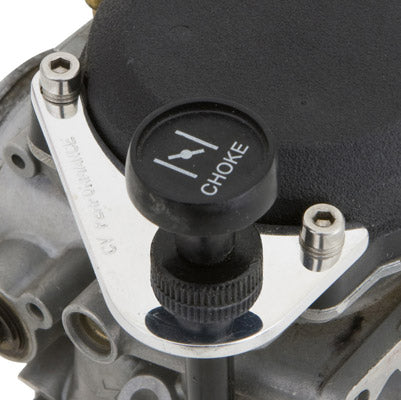Engine Starting Checks!
Engine Starting Checks!
Posted by Tim, Technical Support Specialist.
Welcome to this week’s tech talk at Belmonte Bikes
This week we are focusing on starting checks to get our engines revving!
1) Ensure that you have good clean high octane fuel in your gas tank. Open the gas tank to allow atmospheric pressure to act on the fuel and help push the fuel through the fuel system.
2) Check that the fuel pet cock “on off” valve is in the open position.
3) Check that you have fuel flow to the fuel filter. You should be able to see the fuel flow into the filter.
4) If you’re not sure about fuel flow remove the fuel line at the carburetor and check that yes you do have fuel flowing into the carburetor.
5) Ensure that your battery has a full charge. Use a 12 Volt charger to top up the charge if required.
6) Check that the motor cut- off switch is in the “C” position….not the “C” with an “X” through it. The “C” with an “X” through it is the cut off position. The motor will never start with the switch in that position. Also check to ensure that any other “motor safety cut off” switch is in the deactivated position.
7) Set the choke to “Full Choke” this will enrich the fuel mixture to assist the motor to start. Once the motor is warmed up you can turn the choke off. If you drive with the choke on and the motor is hot, the motor will perform poorly and stall out.
8) Turn on the ignition key and try the lights and horn. This is a good safety check and also proves that both are working before you go for a drive. If the lights and horn do not work check your main fuse. It will be located on the “Red” wire leaving the positive terminal on the battery.
9) Ensure that the engine is in “Neutral” gear position or simply at rest if you have a clutch assembly as opposed to a geared transmission.
10) Ensure that the throttle is in the “at rest” position.
11) Apply either the front or rear brake. This is a safety procedure to ensure that the vehicle does not take off right away when started. Many vehicles use this feature and will not engage the starter unless one of the brakes is applied to hold the vehicle at rest.
12) You can now hit the start button on your vehicle. The engine should turn over and start up.
13) Once the engine has warmed ensure that you turn the choke to the “off” position.
14) Always wear appropriate safety gear when operating your vehicle.
My engine will not start, what are my next steps?
Please try the following:
1) After rolling the engine over 5 times, the engine may have become flooded. Open the choke fully and give the motor half throttle while starting. This will help to remove the excess gas/hydrocarbons in the engine cylinder and the motor will start.
2) The next steps will determine if your problem is fuel related or electrical in nature.
If your engine still will not start remove the spark plug and add one teaspoon of gasoline into the engine cylinder. Reinstall the spark plug and open the throttle to half full throttle position. Try to start the engine. If the engine starts up and runs just fine the problem was simply a stuck needle valve in the carburetor. If the engine starts up and runs only for a short time, you have a fuel problem, again check to ensure that the fuel lines are open with no kinks in the fuel lines. Also ensure that the fuel filter is installed with the flow directional arrow pointing towards the carburetor. Repeat and start the engine again.
If the motor does not start up at all you have a “No Spark” ignition problem .
You would need to check the spark plug, then the ignition coil followed by the CDI. Most often the problems are simple and you will find a loose or poor connection in the ignition system. Ensure that all of the ignition system electrical connections are tight and try to start the vehicle again as per the instructions above.
3) Still having problems starting? If you smell unburnt fuel coming out the exhaust of the vehicle but the engine will still not start then, I recommend that you change the spark plug. Spark plugs can fail any time and are not expensive to replace. Take your old spark plug with you to any autoparts store and ask them for a NKG replacement spark plug. I believe that NKG make an excellent spark plug for a great price.
Change out the spark plug and try to start your motor again.
If your engine still will not start we may need to replace the ignition coil and or the CDI.
Please feel free to contact me for further assistance.
Regards,
Tim
Technical Support Specialist
Info@Belmontebikes.com


What if you do the spark plug test and you see a spark coming off a spark plug how do I know the spark is strong enough to ignite combust and start the motor